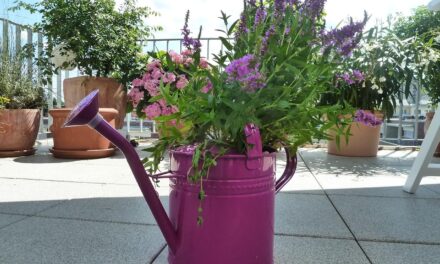You’ll love Examples of successful water management projects in similar environments and Public Policy and Advocacy in Greater Salt Lake
Found it! Public Policy and Advocacy in Greater Salt Lake
Great Salt Lake Faces Crisis: Communities Rally to Save Vital Ecosystem
Salt Lake City, UT – The Great Salt Lake, a critical component of Utah’s environment and economy, is facing a dire situation due to a shrinking water supply. Declining water levels, driven by climate change, increased water usage, and an altered water cycle, threaten the lake’s delicate ecosystem and the well-being of surrounding communities.
Conservation Efforts Gain Momentum:
Local communities are rallying to combat the crisis, urging residents to adopt water-saving practices in their homes. Simple actions like turning off the water while brushing teeth, fixing leaky faucets, and reducing lawn watering can make a significant difference.
Climate Change Exacerbates Problem:
Climate change is accelerating the crisis, impacting the water cycle in several ways:
- Melting Snowpack: Rising temperatures cause earlier and faster snowmelt in the mountains, reducing the amount of water flowing into the lake.
Consequences of a Shrinking Lake:
The shrinking Great Salt Lake carries a heavy price:
- Dust Storms: Exposed dry lakebed creates dust storms, posing health risks and impacting air quality.
Community Action is Key:
The future of the Great Salt Lake hinges on collective action. Collaboration between communities, government agencies, and environmental groups is crucial to securing the lake’s health and safeguarding the region’s future.
The Great Salt Lake: A Sea of Change
TL;DR – Too Long; Didn’t Read
The Great Salt Lake is shrinking due to climate change, overuse of water, and a changing water cycle. This has major consequences for people, wildlife, and the environment. We can help by conserving water, using smarter irrigation, and pushing for policies that protect the lake.
A Sea of Change: Understanding the Great Salt Lake’s Water Cycle
The Great Salt Lake, a giant inland sea in Utah, is a vital part of the region’s environment and economy. It’s like a big bathtub, but instead of a faucet, it gets water from rivers and snowmelt. These rivers drain a huge area, including the Wasatch Mountains, where most of the snow falls. This water then flows into the lake, making it salty because it has nowhere to drain.
H3: Water, Water Everywhere, But Not a Drop to Drink:
Imagine the Great Salt Lake as a big, thirsty sponge. It soaks up water from the rivers and snowmelt, but sometimes it can’t soak up enough. This happens because of climate change, which is making the weather hotter and drier.
H3: How Climate Change Impacts the Water Cycle:
Climate change is affecting the Great Salt Lake in several ways:
- Less Snow: As the Earth warms, the snowpack in the mountains melts earlier and faster. This means less water flows into the rivers, and less water reaches the lake.
- More Evaporation: Hotter temperatures cause more water to evaporate from the lake, making it shrink even faster.
- Changing Rainfall Patterns: Rainfall patterns are becoming more unpredictable. Some years there might be a lot of rain, while other years there might be very little.
The Consequences of Water Scarcity
A shrinking Great Salt Lake means a lot of problems:
H3: A Salty Story:
- Dust Storms: When the lake shrinks, dry lakebed is exposed. This dust can blow into the air, causing respiratory problems and affecting air quality.
- Wildlife in Danger: Many animals, like birds, rely on the lake for food and shelter. When the lake shrinks, they lose their homes and food sources.
- Economic Impact: The lake is important for tourism, recreation, and jobs. As the lake shrinks, these industries suffer.
Solving the Water Crisis: Working Together to Save the Great Salt Lake
There are many ways to help save the Great Salt Lake:
H3: Conserving Water
- Using Less Water in Our Homes: Turn off the water when brushing your teeth, fix leaky faucets, and water your lawn less.
- Smart Landscaping: Plant drought-tolerant plants that need less water.
- Water-Saving Appliances: Choose appliances like dishwashers and washing machines that use less water.
H3: Innovative Irrigation
- Drip Irrigation: This method delivers water directly to the roots of plants, wasting less water.
- Smart Irrigation Systems: These systems use sensors to adjust watering schedules based on weather and plant needs.
H3: Policy Changes
- Water Conservation Regulations: Governments can set limits on how much water people can use, especially during droughts.
- Incentives for Water Conservation: Governments can offer financial rewards to people who conserve water.
Examples of Success: Learning from Others
There are many examples of successful water management projects in similar environments around the world. Here are a few:
- The Colorado River Basin: The Colorado River is another important water source in the West. It’s been facing drought for years, but thanks to water conservation programs and agreements between states, the river is being managed more sustainably.
- The Aral Sea: The Aral Sea in Central Asia was once the fourth largest lake in the world, but it was almost completely drained due to irrigation projects. However, thanks to international efforts and conservation programs, the Aral Sea is slowly recovering.
H3: Advocacy and Action:
We can all help save the Great Salt Lake. We can voice our support for policies that protect the lake, and join organizations like the Active Climate Rescue Initiative.
Summary
The Great Salt Lake is facing a water crisis caused by climate change and overuse. This shrinking lake is impacting wildlife, the environment, and the economy. We can help by conserving water, using smart irrigation, and advocating for policies that protect the Great Salt Lake. By learning from other successful water management projects and working together, we can help secure the future of this vital resource.
More on Examples of successful water management projects in similar environments…
- ## SEO Keywords for “Examples of successful water management projects in similar environments”
- **Case studies of successful water management projects
- **Best practices in water management
- **Water management solutions for [specific environment]
- **Sustainable water management in [specific region/ecosystem]
- **Water scarcity solutions
- **Drought mitigation strategies
- **Flood control projects
- **Water conservation programs
- **Water reuse and recycling
- **Water infrastructure development
- **Water governance models
- **Collaborative water management
- **Community-based water management
- **Water resource management in arid regions
- **Water resource management in coastal areas
- **Water resource management in urban environments
- **Water resource management in agricultural areas
- **Environmental water management
- **Water quality improvement projects
- **Integrated water resource management
- **Water footprint analysis
- **Water security projects
- **Water access and equity
- ## SEO Keywords for “Public Policy and Advocacy”
- **Water policy
- **Water legislation
- **Water regulation
- **Water governance
- **Water rights
- **Water equity
- **Water justice
- **Water advocacy
- **Water conservation policies
- **Water infrastructure investment
- **Water management reform
- **Water pricing policies
- **Water diplomacy
- **Water conflict resolution
- **Water sustainability
- **Water security policies
- **Water and climate change
- **Water and economic development
- **Public engagement in water management
- **Citizen science in water management
- **Water education and outreach
- **Water policy analysis
- **Water policy research
- **Water policy advocacy groups
- **Water policy influencers
- **Water policy news and trends
- **Water policy events and conferences











